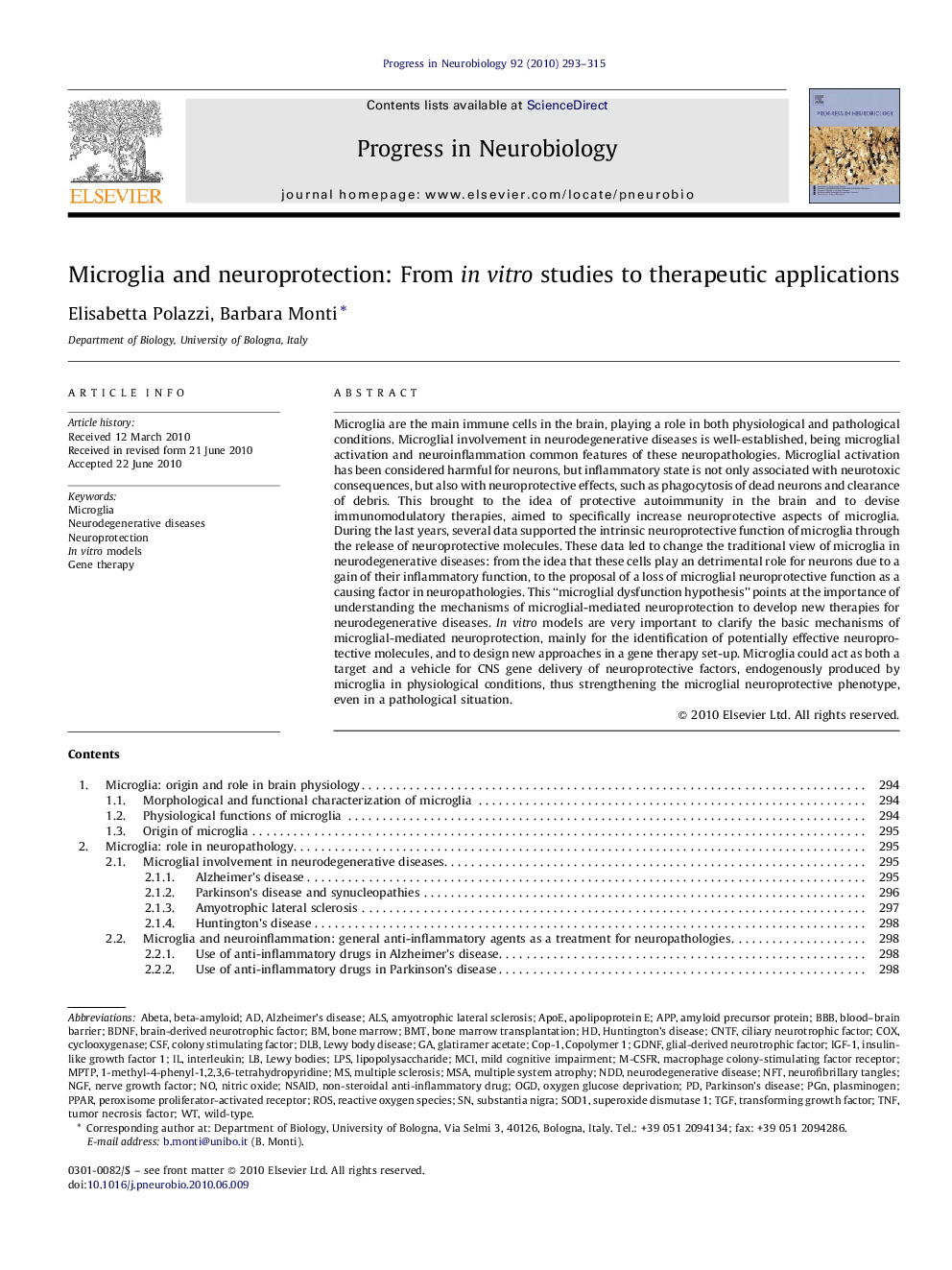| Article ID | Journal | Published Year | Pages | File Type |
|---|---|---|---|---|
| 4353548 | Progress in Neurobiology | 2010 | 23 Pages |
Microglia are the main immune cells in the brain, playing a role in both physiological and pathological conditions. Microglial involvement in neurodegenerative diseases is well-established, being microglial activation and neuroinflammation common features of these neuropathologies. Microglial activation has been considered harmful for neurons, but inflammatory state is not only associated with neurotoxic consequences, but also with neuroprotective effects, such as phagocytosis of dead neurons and clearance of debris. This brought to the idea of protective autoimmunity in the brain and to devise immunomodulatory therapies, aimed to specifically increase neuroprotective aspects of microglia. During the last years, several data supported the intrinsic neuroprotective function of microglia through the release of neuroprotective molecules. These data led to change the traditional view of microglia in neurodegenerative diseases: from the idea that these cells play an detrimental role for neurons due to a gain of their inflammatory function, to the proposal of a loss of microglial neuroprotective function as a causing factor in neuropathologies. This “microglial dysfunction hypothesis” points at the importance of understanding the mechanisms of microglial-mediated neuroprotection to develop new therapies for neurodegenerative diseases. In vitro models are very important to clarify the basic mechanisms of microglial-mediated neuroprotection, mainly for the identification of potentially effective neuroprotective molecules, and to design new approaches in a gene therapy set-up. Microglia could act as both a target and a vehicle for CNS gene delivery of neuroprotective factors, endogenously produced by microglia in physiological conditions, thus strengthening the microglial neuroprotective phenotype, even in a pathological situation.
Research highlights▶ Microglia are neuroprotective and induce neurogenesis in brain physiopathology. ▶ Protective autoimmunity of the brain brought to immunomodulatory therapies for NDDs. ▶ Microglial neuroprotection is mediated by the release of soluble factors. ▶ In vitro models are essential for the identification of neuroprotective molecules. ▶ Microglia are promising targets for new gene therapy approaches for NDDs.
